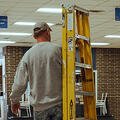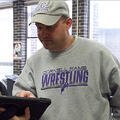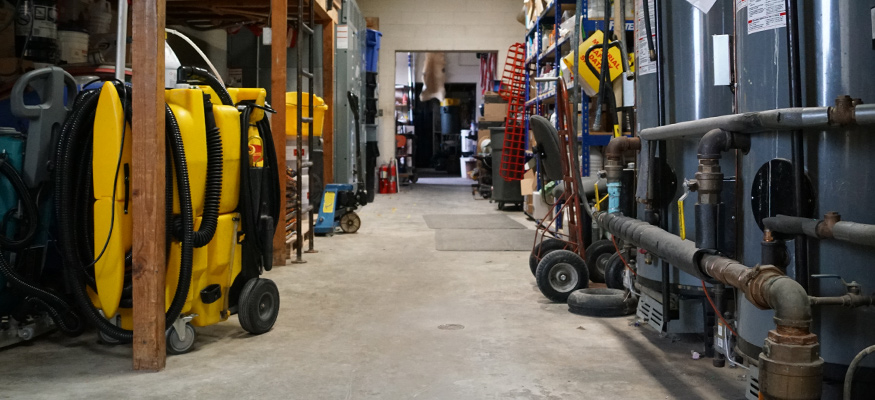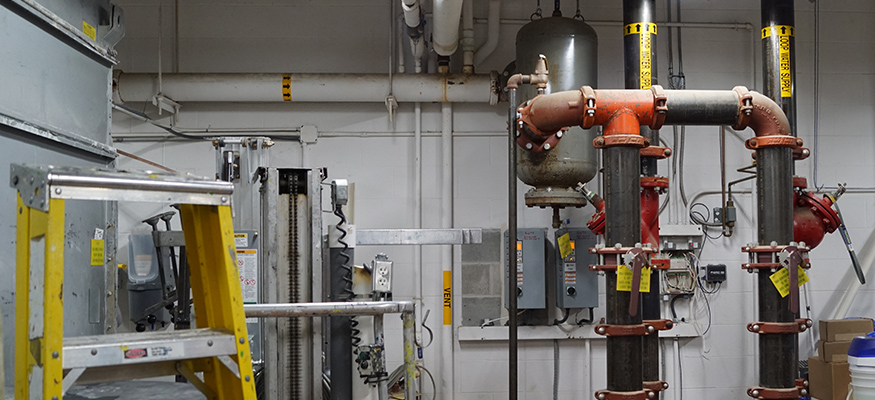How to Replace an Outdated Facilities Management Software in K-12 Schools
Howard-Winneshiek Community School District Case Study
Howard Winneshiek Community School District’s Portfolio
Howard-Winneshiek Community School District is an exemplary K-12 district located in rural northeast Iowa. The district educates about 1,200 students each year and is committed to creating a new “DNA” for learning through Science, Technology, Engineering and Mathematics (STEM) programs.
The district’s facilities department encompasses custodial, maintenance, construction, planning and design. Their mission is to provide students and staff with learning environments that are clean, safe, functional and conducive to learning.
Facilities Management Challenges
Prior to AkitaBox, the facilities department at Howard-Winneshiek used conventional spreadsheets to track maintenance and management of educational buildings. The team eventually moved away from spreadsheets and invested in a well-known K-12 CMMS solution conventionally available on the market. Larry Trende, the district’s facility manager, says that while the company was a good starting point, his team quickly discovered that this particular software was failing to meet their everyday maintenance needs.
Trende says the software’s mobile app was a point of contention, as the interface was cluttered and difficult to use. Not only was his team not taking advantage of this software, Trende also faced yet another difficult challenge: his team was comprised of team members with varying technological skill levels. He decided that it was time to investigate alternative software solutions that would meet the unique needs of his team and encourage adoption, participation and communication.
[X] Dissatisfied with outdated maintenance software
[X] Missing accurate building and space data
[X] Needed a robust preventive maintenance program
[X] Needed a flexible work order management system
In addition to finding a new software solution, Howard-Winneshiek’s facilities department was tasked with determining the best ways to care for the district’s building portfolio. His team cares for numerous other assets and machinery across multiple building locations, including heat pump systems, boilers, geothermal heating and cooling units, plumbing and more.
Trende says his team needed a robust software solution that could easily track data for these assets, including the make, model, serial number, manufacturer, location and work order history for each piece of equipment. AkitaBox’s software platform fit the bill because of all the features that it provided at a competitive price point. The department made the decision to purchase it.

“We decided to invest in AkitaBox because it offered features that our old software solution just couldn’t compete with. AkitaBox has interactive floor plan maps, easy-to-use preventive maintenance logs, an intuitive work order management system and a much stronger mobile application than its competitor has. These were just some of the reasons we ultimately decided to make the switch.”
Larry Trende • Facilities Manager
The AkitaBox Process
In the end, over 285,000 square feet of data was collected. The entire process end-to-end took less than 90 days to complete, and downtime and interruptions to the school were minimal.
Real Results with AkitaBox
Since the AkitaBox implementation process, Howard-Winneshiek’s facilities team has made great strides in the way they care for and manage their buildings.
Trende says his facilities team is comprised of people with varying technological skill levels. Some team members identify as more “technologically-inclined”, while others prefer a more traditional pen-and-paper approach to maintenance management. Howard-Winneshiek needed a hybrid software solution that could adapt to the needs and preferences of both audiences. AkitaBox was able to meet this goal, as the software interface is modern, intuitive to learn and easy to use for all skill levels. Trende says AkitaBox’s mobile interface has been especially user-friendly for all team members, no matter their age or skill level.
“AkitaBox is so much more organized than the software and spreadsheets we were using before,” Trende says. “When I first started using spreadsheets, it was impossible to keep up with it. And then the other software we were using just wasn’t making the cut.”

“AkitaBox has already made me more accountable as a manager. It automatically reminds me and my team of upcoming work orders and if a task is overdue, it sends an alert to our emails. I appreciate receiving update emails every day because they highlight what got done yesterday, what’s due today and what’s coming up soon.”
Larry Trende • Facilities Manager
As the team at Howard-Winneshiek has begun to automate data collection and building management processes, Trende says that a few members are still working on transitioning away from paper-based work order management as they learn the ins-and-outs of the software. AkitaBox understands that making the switch to software, especially from a paper-based or spreadsheet-based system, can be intimidating.
AkitaBox accommodates the needs of all users by offering the ability to print work orders for maintenance technicians to complete. No matter which way an employee utilizes AkitaBox, data is successfully standardized. Information from paper work orders can be entered into the software, and the final deliverable is data that is preserved, protected and accessible for years to come.
Trende says that the ability to print work orders has been useful, especially for staff members who are still getting comfortable with using technology in the workplace. He believes that with time, his staff will become more confident in adopting software and phasing out paper-based systems. AkitaBox’s Customer Success Managers are helping with this transition, offering best-in-class training and support, scheduling regular check-ins and ensuring users get the most out of their investment.
Trende foresees that future employee onboarding will be simplified with AkitaBox. New hires will be handed AkitaBox and a tablet from day one. They will be able to use the software to learn building layouts, locate assets and view previous work order histories for each piece of equipment.
AkitaBox simplifies employee onboarding with interactive floor plan maps, which enable users to place color-coded pins on floor plans to identify space and assets. A visual approach to asset mapping makes adoption of the software simple, especially for users who are new to using facilities technology.
The Howard-Winneshiek facilities team has successfully simplified the ability for district staff to submit service requests. Trende says there has been no negative feedback from users regarding AkitaBox’s online service request portal. He notes that with the district’s previous software provider, teachers were struggling to find the portal, log in and use it efficiently. Now, teachers have reported that AkitaBox’s service request portal is much easier to find and use.
“Before AkitaBox, I was using a spreadsheet to track all the maintenance tasks that teachers wanted done,” Trende says. “This was a huge hassle and difficult to maintain. But now, teachers can easily submit requests through the online portal and I’m able to instantly convert them to work orders in the software.”
Statistics: Howard-Winneshiek Community School District
6.63 |
3 Hours |
1 : 1.04 |
1 : 1.31 |
| Average Work Orders Completed Per Day | Average Hours Logged Per Work Order | Work Orders Opened to Closed | Reactive to Preventive Work Orders |
Trende says that his favorite AkitaBox features are the mobile application, the interactive floor plan map, the preventive maintenance modules and the work order management tool.
“I like having the ability to snap a picture of an asset and add a work order for it as I’m walking through the buildings,” Trende says. “AkitaBox’s preventive maintenance logs are really easy to use, and so far, the floor plan viewer and asset management capabilities in AkitaBox are much better than the software we were using before. The transition to AkitaBox has been pretty easy.”
Trende reports that AkitaBox has significantly increased the efficiency of inspection routines, preventive maintenance and work orders across multiple assets of a certain type. For example, he says that AkitaBox gives his team the ability to highlight all fire extinguishers at once and mark them as “complete” after inspections are concluded.
“The software we were previously using did not offer this feature,” Trende says. “It was frustrating that each asset had to be marked as ‘done’ individually. The ability to highlight all assets of a certain type has saved me a lot of time, whereas before, I had to do them all one-by-one.”
Howard-Winneshiek’s facilities team has proven to be more proactive with scheduled maintenance after the implementation of AkitaBox. Trende says AkitaBox has saved him multiple service calls.
“One time, I went down to conduct a regular check on the water softeners,” Trende recalls. “I took a visual and noticed one wasn’t working. I was able to fix it quickly, before I had a limed-up dishwasher.”
Trende says there is a common misconception among facility managers that facility management software is time-intensive, costly and difficult to use. “It’s really not,” Trende says. “Facility management software is much easier to use than people think, even if you or your team members aren’t tech-savvy. Purchasing a software like AkitaBox is definitely worth the investment.”

“Scheduled maintenance can be easy to ignore. But with AkitaBox, I have a guilty conscience if I see a task is overdue. I feel pushed to go take care of it instead of letting it become deferred maintenance.”
Larry Trende • Facilities Manager
Ready to Take Your Facilities Management to the Next Level?
Talk to an AkitaBox software advisor today.


